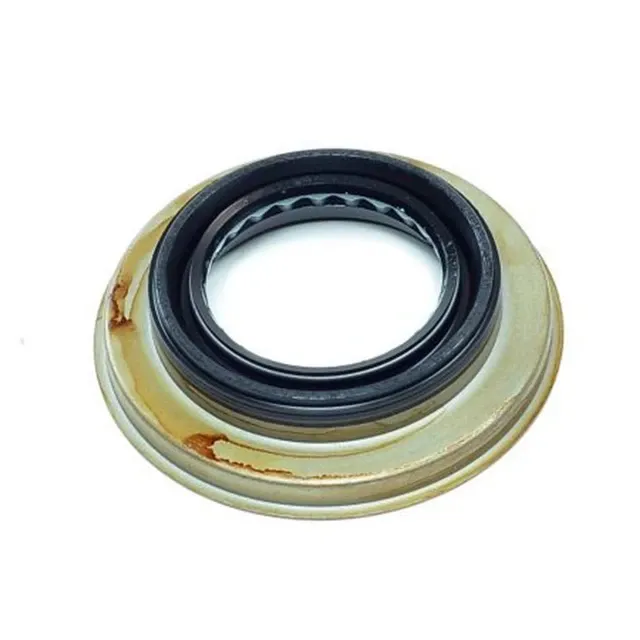automatic transmission rear seal
Understanding the Automatic Transmission Rear Seal
The automatic transmission rear seal is a crucial component in a vehicle's transmission system, yet it often goes unnoticed until a problem arises. This small but significant part serves as a barrier between the transmission and the driveshaft, preventing transmission fluid from leaking out. Understanding its function, common issues, and maintenance can help vehicle owners ensure the longevity and efficiency of their automatic transmission.
Function of the Rear Seal
The primary purpose of the automatic transmission rear seal is to contain the transmission fluid within the transmission housing. This fluid is essential for lubricating the internal components, facilitating gear shifts, and ensuring the smooth operation of the transmission system. The rear seal also ensures that dirt and contaminants from the environment do not enter the transmission, which could lead to significant damage. Its design typically consists of a rubber or silicone material that creates a tight seal around the output shaft as it rotates.
Common Issues
While the automatic transmission rear seal is durable, it is not immune to wear and tear. Over time, several factors can lead to seal failure. These include
1. Wear and Tear Like any rubber component, the rear seal can harden or crack due to prolonged exposure to heat, chemicals, and the constant motion of the driveshaft. This deterioration can cause leaks.
2. Improper Installation If the seal is not installed correctly during a transmission service or repair, it may not create an adequate seal, leading to fluid leakage from the rear of the transmission.
3. Excessive Pressure High pressure within the transmission can cause the rear seal to fail. This might result from blockages in the fluid passages or an excessively full transmission system.
4. Fluid Contamination If the transmission fluid becomes contaminated due to metal shavings or debris, it can cause the seal to degrade faster.
Signs of a Failing Rear Seal
automatic transmission rear seal

Recognizing the signs of a failing automatic transmission rear seal early can prevent more severe transmission issues. Common symptoms include
- Fluid Leaks One of the most obvious signs is the presence of red or brown fluid pooling beneath the vehicle, typically where the transmission is located.
- Burning Smell If the transmission fluid is leaking, it can lead to reduced levels of fluid in the transmission, causing it to overheat. This can create a burnt smell, indicating potential damage.
- Slipping Transmission A leak can lead to low fluid levels, resulting in transmission slippage, where the vehicle struggles to shift gears.
- Unusual Noises A failing rear seal can permit air to enter the transmission, leading to unusual noises such as whining or grinding, especially when shifting gears.
Maintenance and Replacement
Regular maintenance is key to prolonging the life of the automatic transmission rear seal. This includes regular fluid checks and changes, as well as inspections for leaks and other wear signs. If a problem is detected, it is essential to address it immediately to prevent further damage.
Replacing a failing rear seal typically involves removing the driveshaft and may require a complete transmission service, depending on the vehicle's design. Due to the complexity of the task, it is often recommended that a qualified mechanic performs this procedure to ensure proper installation and function.
Conclusion
The automatic transmission rear seal may be a small part, but its significance cannot be overstated. Proper understanding and timely maintenance can prevent costly repairs and ensure the smooth operation of your vehicle. Being proactive about transmission care is the best strategy to keep your driving experience safe and enjoyable. If you suspect any issues with your rear seal, consult a professional to maintain the health of your automatic transmission system.
-
Simplifying Oil Changes: A Comprehensive Guide to Oil Drain Plugs and Their Variants
News Aug.04,2025
-
Mastering Oil Drain Maintenance: Solutions for Stripped, Worn, and Upgraded Oil Plugs
News Aug.04,2025
-
Fixing Oil Pan Plug Issues: Leaks, Stripped Nuts, and the Right Replacement Solutions
News Aug.04,2025
-
Everything You Need to Know About Oil Drain Plugs: Sizes, Fixes, and Upgrades
News Aug.04,2025
-
Choosing the Right Oil Drain Plug: A Guide to Sizes, Materials, and Drain Innovations
News Aug.04,2025
-
A Complete Guide to Automotive Drain Plugs: Types, Problems, and Innovative Solutions
News Aug.04,2025
-
The Ultimate Guide to Car Repair Kits: Tools and Essentials Every Driver Should Own
News Aug.01,2025
Products categories















